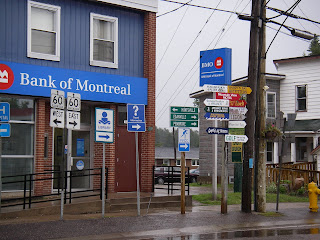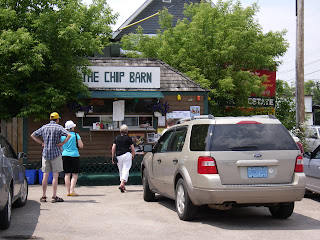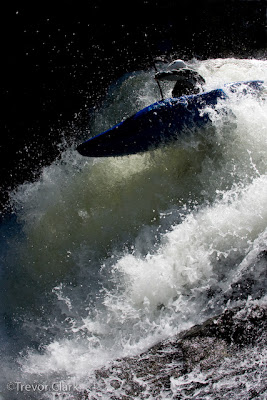
Image: A macro view of the Food constituency as a system of related influences and opportunity areas, which is by no means a complete picture. Students from many parts of India will work together and fill in the gaps and unfold hidden possibilities with their experience and their imagination
The Design Concepts and Concerns course which is taught at NID helps our students take the macro-micro design exploration route in their study and journey through the various pressing design problems and opportunities that we find in the Indian economy and that which is affecting the people most at the time when the course is being conducted are chosen each year. Design is always to be understood in context with a particular setting if we are to derive any meaning from the activity otherwise the meaning will be provided by the observer and this may not be the intended approach of the designers, in which case it is usually back to the drawing board. This year we have chosen to focus on “Food and Inflation”, two major issues that threaten the continuance of the Government of India if it is these concerns are not managed well enough and the global cues are not very helpful either, what with oil hitting the 145 USD mark over the weekend and with experts talking of a 200 USD level by the year end before things may start to cool off a bit, if at all.
The Indian Government at the Centre, is led by the Congress Party, which is a historic cousin of the Indian National Congress that brought Independence to the country, and in this avatar it is having its own set of problems with its coalition partners, particularly on the contentious issue of signing the nuclear non-proliferation treaty with the USA and the international partner members which will give India some degree of energy security in the age of exploding oil prices. Energy is one of the key drivers of the Indian economy as it is the worlds and with rising oil prices all nations will have to address their energy security, especially if they are as dependent on imports as India is in its efforts to keep growth of the economy at a healthy 9 percent plus for the next few years. Here again it is not clear if going nuclear is the only way forward with a country that is endowed with plenty of sunshine and wind along its coastline, many possibilities could emerge if only we tried. Inflation kicking in at over 11 percent in the last week puts paid to all claims of sustained growth and in a democracy heading towards an impending election across the country the Government is pulling out all stops to help stem the inflation tide, particularly in the very sensitive food price front, which hits the common man in the street the most, and therefore would be a sore issue at the hustings. The search for stability is hard to find in a shaky coalition when the partners are unwilling to budge from the nuclear stand. During the last budget the Indian food situation came into sharp focus this year with many instances of farmer suicides in many parts of the country, especially in the Vidharbha region, and the Government made a magnanimous gesture of waiving all farm loans of small and marginal farmers and promised to support the banks through fiscal supports to provide them the safety net needed. This gesture ran into several tens of thousands of crores, and according to The Hindu, about Indian Rupees 60,000 crores (one crore is equal to ten million Rupees) when it was first announced in the budget speech by the Indian Finance Minister and later modified to a much higher sum, very generous indeed, but the problem that lies at the heart of this dilemma still remains unchanged.
“Loan waivers are at best temporary palliatives to the problems facing rural India. Regrettably, the powers that be and the powers that want to be have rarely been willing to confront the difficult and complex problems.”
A. Vaidyanathan

Image: A Vaidyanathan in The Hindu, Thursday, Mar 06, 2008. (Read on here)
I wonder what would be the impact if even a small portion of this humungous sum of money were invested in the area of innovation in the food and agriculture sectors with a slightly longer term view, rather than by just looking down the barrel of the next General Elections a few months away? The use of subsidies when there is a political and economic crisis is quite commonplace but making investments in basic innovations that can provide long term answers to wicked problems is not seen as a practical move in our land of five year terms of public office and short term politics. Can we continue in this strain for long with all the negative cues coming from the global warming front and the economic downturn that is raising its head from the rising oil prices and to top it all the social unrest unleashed due to pressures of change and transformation like the opposition to the SEZ’s at Nandigram and Singur where the local farmers are up in arms against the TATA Nano project?
The Hindu Business Line, Monday, Jan 21, 2008: Bengal verdict on Singur
The Hindu Business Line, Friday, Jan 11, 2008: Inclusive innovation

Image: University of Industrial Arts, Helsinki’s historic building, the tram that is a sustainable tradition of the city and the Rector, Yrjö Sotamaa speaks out in favour of innovation of a softer kind. (Read more here)
These are not simple problems but we do believe that the boundaries of these problems can be explored through the use of design rather than on the streets through negotiations between adversaries from opposite parties. Design can if given a chance can indeed find and show alternate models that could then be presented to all stake-holders for a negotiated settlement of the conflicts. This form of innovation and change is at the heart of the future of politics and many countries are now beginning to recognize this power of design visualization and a recent example is the Helsinki event that merged three major Universities to form the new Innovation University which has been christened the Aalto University after the great Finnish architect and designer, more about this in my previous post on this subject.
We will not wait for the Government of India to change its policies about education and innovations in India but forge ahead instead with some basic explorations that can be done on our own in the classrooms at NID with the creative human capital that is available in the motivated students who have come to learn design at our school. In my paper titled “Creating the Unknowable: Designing the Future in Education” that I had presented at a peer reviewed design conference, EAD06 in Bremen, Germany in 2005, I have given an outline of the course called “Design Concepts and Concerns” that has been offered to NID students of all programmes over the past fifteen years. The blog that was set up last year to document this course in a contemporaneous manner can be seen at this link below and last year the theme was Water, which happens to be the most contentious issue across India and the world, which is getting worse by the day. Here we looked at the macro-micro design analysis of the context to understand the situation at a personal level of each student participant and then went on to build alternate models to address these issues through design imagination and innovative offerings. The course ended with a long list of design opportunities and some of these were selected by the groups of students to be visualized as scenarios that could make the imagined outcomes more visible and tangible for decision making processes that would be political and participatory, both people and the Government could be stake holders along a long chain of interest groups, al of whom could have an informed say in the matter that would affect all of us. Take a look at what they had to offer and give your comments and feedback for this year’s theme, FOOD & Inflation.
More at the Design Concepts and Concerns blog here.







































